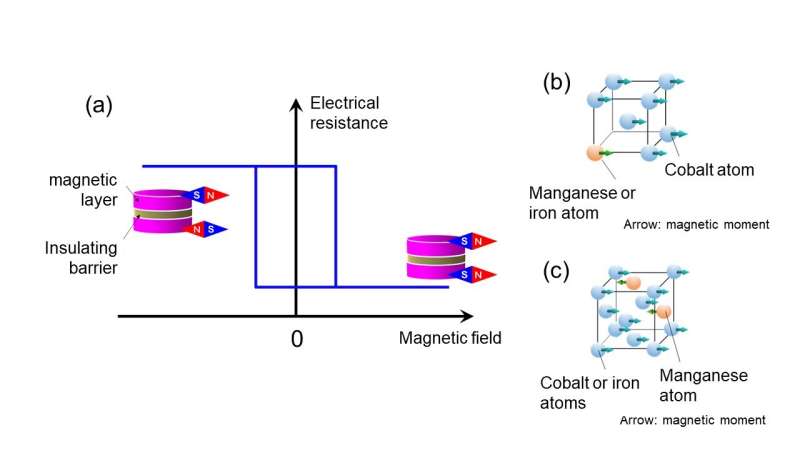Nanowerk June 9, 2023
Much of the hardware and sensors electronic devices rely on magnetoresistive random access memory (MRAM) and magnetic sensors. In magnetoresistive devices when the magnets are aligned, electrons can easily tunnel through the thin insulating barrier between them making the device efficient; when magnets are not aligned the device is less efficient due to higher resistance. Current tunnel magnetoresistive devices comprise magnesium oxide and iron-based magnetic alloys, like iron-cobalt. Iron-based alloys have a body-centered cubic crystal structure in ambient conditions and exhibit a huge tunnel magnetoresistance effect in devices with a rock salt-type magnesium oxide. Researchers in Japan used data science and/or high-throughput experimental methods to obtain huge magnetoresistance in devices by adding a small amount of iron to the metastable body-centered cubic cobalt-manganese alloy. The magnetoresistance ratio was 350% at room temperature and exceeded 1000% at a low temperature. The device fabrication employed the sputtering method and a heating process, something compatible with current industries… read more. TECHNICAL ARTICLE

a) A schematic diagram of a tunnel magnetoresistive device and magnetoresistance… Credit: Tohoku University.